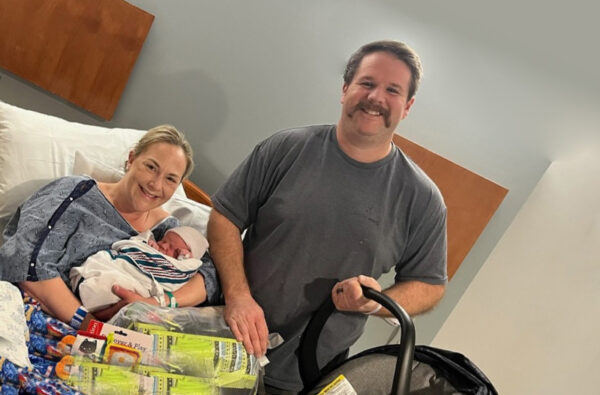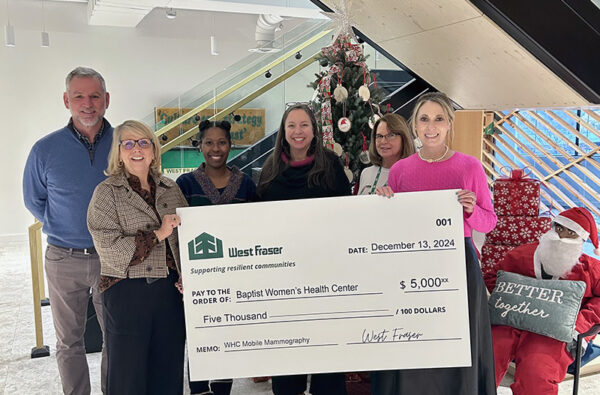Dr. Thomas Pitman is an OB-GYN and urogynecologist specializing in minimally invasive pelvic reconstructive surgery with Baptist Medical Group in Southaven, Mississippi. He’s traveling around the U.S. teaching other physicians how to use a vaginal endoscopic technique that eliminates the need for incisions and offers faster recovery with less pain. We talked with Dr. Pitman about the advantages of vaginal endoscopic surgery and how it can help women with a variety of health conditions.
How is vaginal endoscopic surgery different from open or laparoscopic surgery?
With Vaginal Natural Orifice Transluminal Endoscopic Surgery (vNOTES), we can achieve the safety of vaginal surgery with the visualization of laparoscopy. In April 2021, I became the first surgeon in the Mid-South to use vNOTES, and I’ve done more than 180 cases already. While a few other surgeons in the area have recently trained for vNOTES, I’m still the only one in the Mid-South and in the Baptist system performing vaginal endoscopic surgery. I’m hoping more surgeons will adopt it.
We’ve known for decades that the vaginal approach to surgery is the safest for our patients, but the limitation with vaginal surgery was visualization. Now that we can use the scope through the vagina, there are far more possibilities.
If you look at invasiveness of gynecologic surgery, the most invasive is an open procedure where you cut the belly completely. The next step down would be a laparoscopic procedure with or without the robot, with multiple incisions on the abdomen. The next step down would be a single-incision laparoscopic procedure, with the laparoscope and all the operative instruments going through that one incision.
The least invasive technique would be vaginal surgery. When we add laparoscopy, we get the best of both worlds – a minimally invasive technique and excellent visualization. There’s no incision at all. Vaginal surgery with the addition of the endoscope allows for the removal of much larger uteri and more complex pathology than would typically be removed vaginally without the endoscope. With vNOTES, we can also do tubal sterilization or remove the ovaries if necessary. We can perform hysterectomies all through the vagina, even in patients who’ve had previous surgery.
Right now, unfortunately in this country, almost 60% of hysterectomies are done abdominally with a big incision. The recovery is very uncomfortable. Only about 11 to 13% of hysterectomies are done vaginally. I’m doing 98% of my hysterectomies with vaginal endoscopic surgery. I hope that within the next few years, more than 60% of all hysterectomies will be done using vaginal endoscopic surgery.
The only real contraindication with vNOTES is in patients who have severe endometriosis with obliteration of the cul-de-sac, a space behind the uterus.
What other conditions are treated with vaginal endoscopic surgery?
I also perform pelvic reconstructive surgery for patients who have pelvic organ prolapse, bowel control problems and urinary incontinence. I implant the InterStim device, which is like a bladder pacemaker for overactive bladder patients who are refractory to medical treatment.
Many people don’t realize that one of the main reasons patients go to nursing homes is because the family can’t handle the hygiene issues. If you’re able to help patients control their bowels and bladder, they can stay with their family longer.
Are patients hesitant to seek treatment for bladder and bowel disorders?
Absolutely, and that’s why I do webinars about once a quarter to help educate patients and providers. Unless providers ask the right questions, patients don’t typically offer the information because it is embarrassing to them.
What are the advantages of vaginal endoscopic surgery?
Postoperative pain is significantly reduced. Studies have shown the average narcotic use post-op for patients who have vaginal endoscopic surgery is only three tablets.
Also, the operative time is faster compared to robotic surgery that involves docking the robot and multiple incisions. We’re reducing costs with the shorter operative times and improving the post-op recovery experience. The patients love it, and a lot of patients don’t feel like they even had surgery.
Is there anything you’d like to add?
I want physicians to be open to adopting this new technique, and I’d like to educate and train other surgeons in our system. I’m in the process of working with Dr. Frank Ling with the OB-GYN Residency program at Baptist Memorial Hospital for Women to train the faculty in vNOTES. Baptist has a simulation lab that we hope to use to train a new generation of physicians so they may adopt this technique as part of their training.
There are about 40 faculty now teaching vNOTES across the country, and we’ve gotten close to 1,000 people now trained to do it. I think vaginal endoscopic surgery is going to revolutionize gynecology in the next few years.






